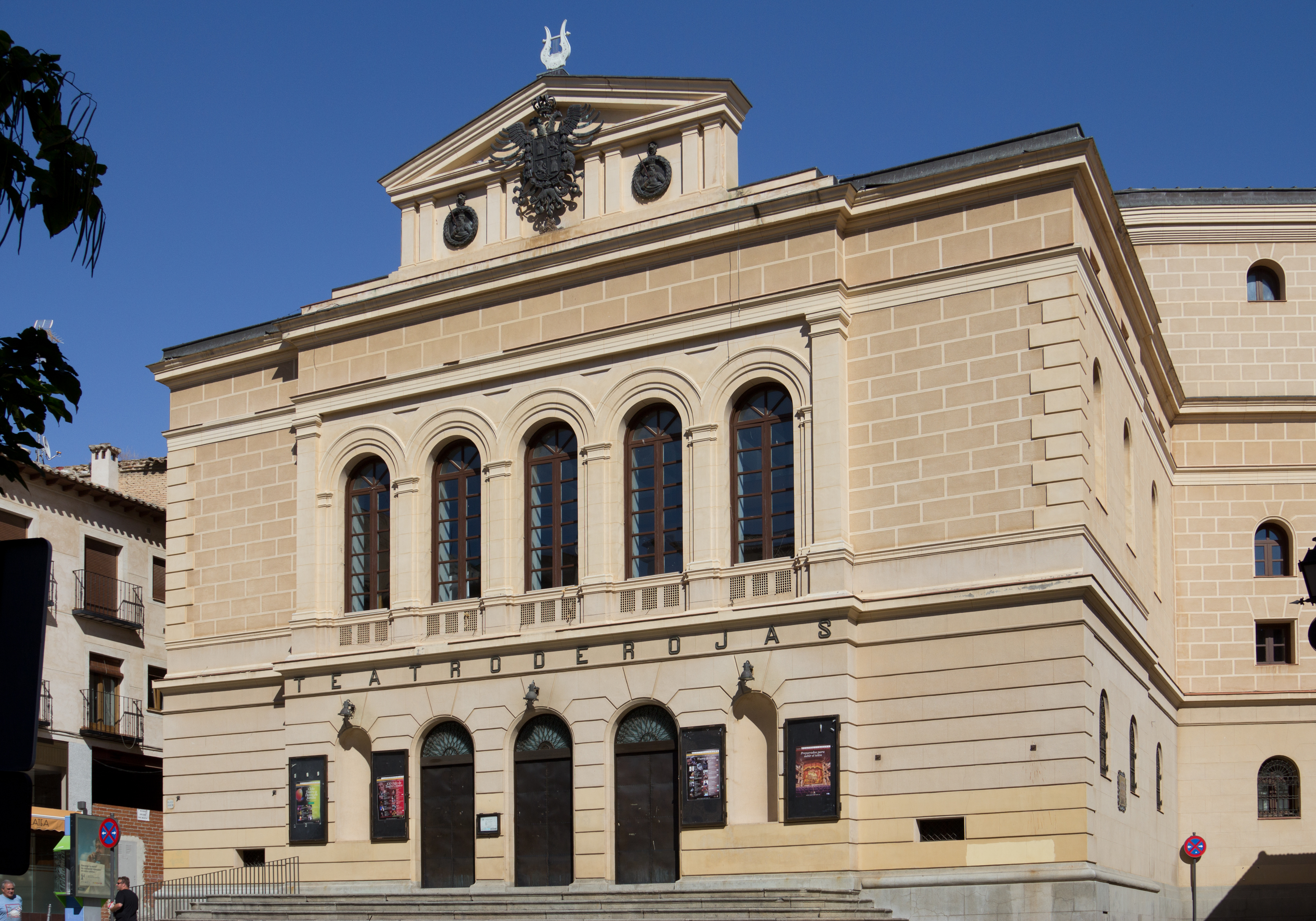Teatro Rojas on:
[Wikipedia]
[Google]
[Amazon]
 The Teatro Rojas is a
The Teatro Rojas is a
 The Teatro Rojas is a
The Teatro Rojas is a theater
Theatre or theater is a collaborative form of performing art that uses live performers, usually actors or actresses, to present the experience of a real or imagined event before a live audience in a specific place, often a stage. The perform ...
in the city of Toledo ( Castile-La Mancha, Spain
, image_flag = Bandera de España.svg
, image_coat = Escudo de España (mazonado).svg
, national_motto = ''Plus ultra'' (Latin)(English: "Further Beyond")
, national_anthem = (English: "Royal March")
, i ...
). It was inaugurated in 1879 on the old corral de comedias
''Corral de comedias'', literally a "theatrical courtyard", is a type of open-air theatre specific to Spain. In Spanish all secular plays were called ''comedias'', which embraced three genres: tragedy, drama, and comedy itself. During the Spani ...
called Mesón de la Fruta and in its construction participated several architects. It is denominated like this in honor of the Toledan playwright Francisco de Rojas.
Construction
The author of the first project of building of the theater was the municipal architect Luis Antonio Fenech, who presented in the city council the drawings and the corresponding memory in 1866, year in which begins to dismantle the coliseum that was to the previouscorral de comedias
''Corral de comedias'', literally a "theatrical courtyard", is a type of open-air theatre specific to Spain. In Spanish all secular plays were called ''comedias'', which embraced three genres: tragedy, drama, and comedy itself. During the Spani ...
, the Mesón de la Fruta. Soon after, due to the death of Fenech, was named municipal architect Ramiro Amador de los Ríos, son of José Amador de los Ríos
José Amador de los Ríos y Serrano (30 April 1818 – 17 February 1878) was a Spanish intellectual, primarily a historian and archaeologist of art and literature. He was a graduate in history of the Complutense University of Madrid.
In 1844 ...
, that had to take charge immediately of the definitive demolition of the previous theater.
Starting from the plant already set by Fenech and on the idea of showing the square the main façade and leaving for the long axis of the site the development of the hall and the stage
Stage or stages may refer to:
Acting
* Stage (theatre), a space for the performance of theatrical productions
* Theatre, a branch of the performing arts, often referred to as "the stage"
* ''The Stage'', a weekly British theatre newspaper
* Sta ...
, Amador de los Ríos introduced some novelties. He multiplied the stairs, improved the layout of the hall, giving it a more open horseshoe, graduated the flight and the layout of the different floors and favored the ventilation through the ceiling of the hall.
Ramiro Amador de los Ríos was succeeded in a few years by three more architects, although they did not change the current project.
The theater was inaugurated on October 19, 1879, with the depiction of the work of Francisco de Rojas, the drama of honor '' Del Rey abajo ninguno''.
Interior
In the paintings of the ceiling these appearThalia
Thalia, Thalía, Thaleia or Thalian may refer to:
People
* Thalia (given name), including a list of people with the name
* Thalía (born 1971), Mexican singer and actress
Mythological and fictional characters
* Thalia (Grace), one of the three ...
, the muse
In ancient Greek religion and mythology, the Muses ( grc, Μοῦσαι, Moûsai, el, Μούσες, Múses) are the inspirational goddesses of literature, science, and the arts. They were considered the source of the knowledge embodied in the ...
of the theatre
Theatre or theater is a collaborative form of performing art that uses live performers, usually actors or actresses, to present the experience of a real or imagined event before a live audience in a specific place, often a stage. The perform ...
, and a series of medallions in which we see great authors of the Theatre in Spain, like Tirso de Molina
Gabriel Téllez ( 24 March 1583 20 February 1648), better known as Tirso de Molina, was a Spanish Baroque dramatist, poet and Roman Catholic monk. He is primarily known for writing '' The Trickster of Seville and the Stone Guest'', the play from ...
, Calderón de la Barca or Francisco de Rojas, that gives name to the theater.
The parapet
A parapet is a barrier that is an extension of the wall at the edge of a roof, terrace, balcony, walkway or other structure. The word comes ultimately from the Italian ''parapetto'' (''parare'' 'to cover/defend' and ''petto'' 'chest/breast'). ...
s of the box
A box (plural: boxes) is a container used for the storage or transportation of its contents. Most boxes have flat, parallel, rectangular sides. Boxes can be very small (like a matchbox) or very large (like a shipping box for furniture), and can ...
, the narrow columns of iron, the opening of the stage with the boxes of the proscenium and, finally, the spectacular curtain of the mouth, make of this room an important piece within the particular panorama of the Spanish municipal theater of 19th century.
References
{{coord, 39.8578, N, 4.0226, W, source:wikidata, display=title Arts in Castilla–La Mancha Theatres in Spain Tourist attractions in Castilla–La Mancha Bien de Interés Cultural landmarks in the Province of Toledo Buildings and structures in Toledo, Spain Theatres completed in 1879